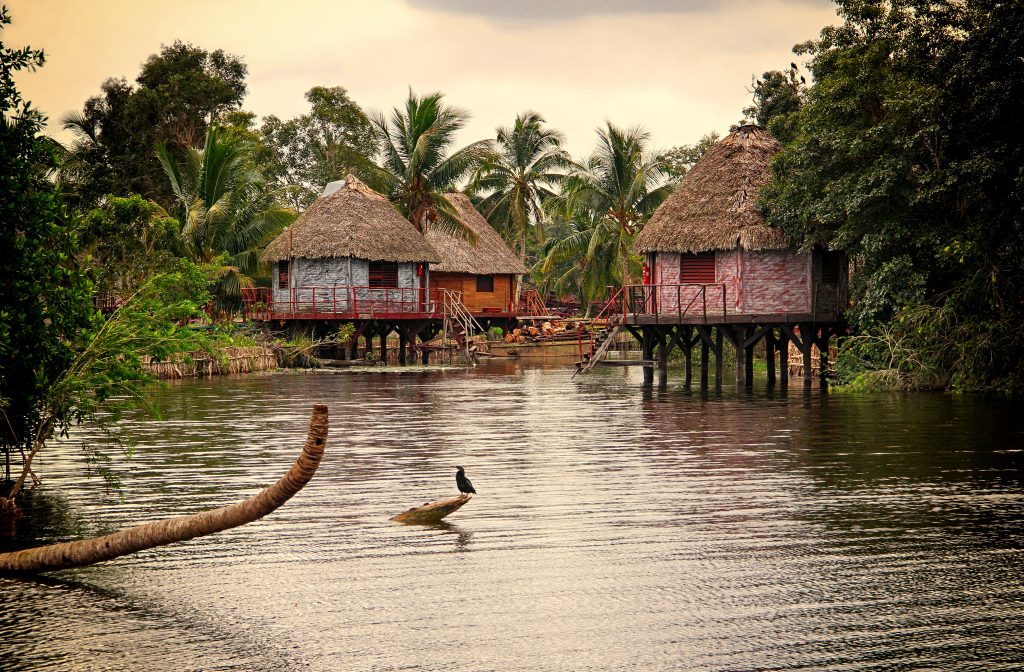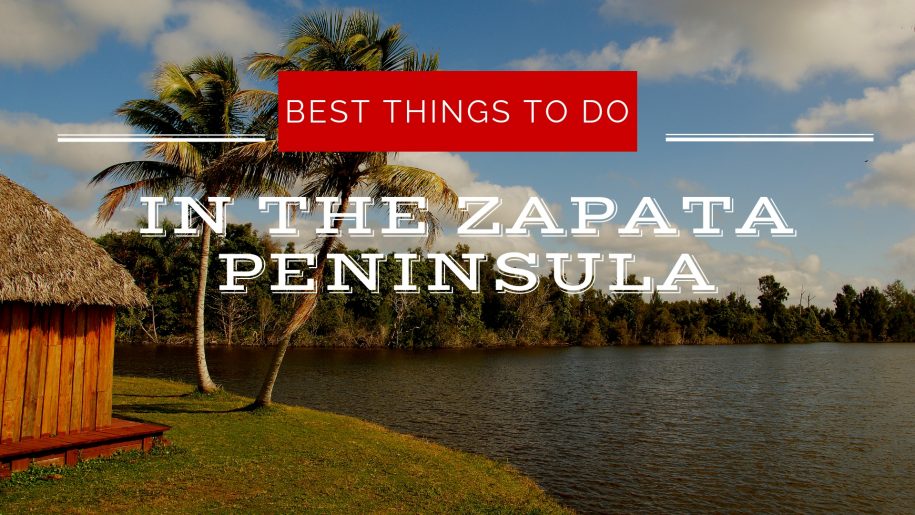The Zapata Peninsula covers 4,200 square kilometres and lies on Cuba’s southern coastline, 135kms south-east of Havana and west of Cienfuegos. Largely uninhabited, its one of the best places in Cuba for wildlife encounters and bird watching, as well as scuba diving. Though wild, the Zapata Peninsula is easily reached from Havana and much of the rest of the country thanks to the proximity of the A1 highway. But what will you find when you get there? Here are the best things to do in the Zapata Peninsula!
Unwind on the beaches of the Zapata Peninsula

Don’t let the Zapata Peninsula’s other name, Zapata Swamp put you off! Located within both a UNESCO Biosphere Reserve and a National Park the soft bleached sands of the beaches are pristine and unspoiled with jungle spilling right down to the clean, warm waters. One of the easiest beaches to get to is Playa Larga. It’s the location for the headquarters of Parque Nacional Ciénaga de Zapata, making it a great place to base yourself. There are plenty of beachside accommodation options and activities on offer.
Explore the wonders of Ciénaga de Zapata
The most treasured areas of the Zapata Peninsula are protected by the Ciénaga de Zapata National Park, which you can explore yourself (as you bring your own car) or as part of a tour. Whether your on your own or with a tour group you will definitely need a local park guide. This is easy to arrange at the park headquarters in Playa Larga.
Dirt roads crisscross the park, letting you get up close and personal with all manner of animal and bird species, from pelicans and egrets, to falcons and Cuban Trogons. The mangroves also provide a habitat for endless numbers of crabs, giant toads, and the Cuban crocodile, which historically only live within the confines of the park.
Scuba diving and snorkeling in crystal clear waters
The Zapata Peninsula’s warm clear waters make it the perfect place to get the out your swimsuit and head into the shallows or go further out to go snorkeling or scuba diving. The best places to rent this gear are between Playa Larga and Playa Giron. The coral reef is so close to shore that it makes it accessible even for those who find themselves uncomfortable in tidal waters. The crystal clear waters are a home to a myriad of very colourful tropical fish, so a great day of snorkeling!
Visit the Criadero de Cocodrilos croc farm
If you fail to catch sight of a Cuban crocodile in its natural environment in the Ciénaga de Zapata National Park, have no fear! You’re guaranteed a sighting at the Criadero de Cocodrilos crocodile farm. Located just off the main road to Playa Larga. The farm has played a major role in bringing the Cuban crocodile back from the edge of extinction since it was founded in 1962. With a strong focus on conservation and breeding, visitors can see the crocodiles at all the different stages of their life. From youngsters right up to fully-grown adults. You can even hold a juvenile crocodile for a photo op if you so desire.
Commemorate the revolution at the Bay of Pigs
Playa Giron on the Bay of Pigs has some exquisite vistas, and wonderful snorkeling and diving, however its probably best known as the site at which US-backed counter-revolutionaries stormed the Cuban coast in a failed attempt to overthrow Fidel Castro’s regime in 1961. The Museo de Giron at the Bay of Pigs gives you a full historical rundown. The museum has exhibits of planes and other weaponry used in the battle. Don’t miss the 15-minute film either, which gives a real sense of the heightened tensions of the Cold War that lead to the Cuban Missile Crisis of the following year.
Glide across the Laguna del Tesoro
The Laguna del Tesoro or Treasure Lake, is named after a 16th century legend that the indigenous Taino people hurriedly hiding threw their gold into the lake when they heard that the Spanish conquistadors coming. The lake is accessible by boat only, via the wetlands of Boca de Guamá. The eastern side of the lake is home to the Villa Guamá tourist resort, spread over a handful of small islands and constructed to resemble a traditional Taino village. The lake is also popular with big game fishermen and women, thanks to its stock of trout and the carnivorous Large Mouth Bass, which can grow up to 75 cm in length and weigh close to 11.5 kg!
Pop in to visit Australia!
Say what? No, don’t pack your bags and jet off just yet, because the former sugar mill town of Australia lies on the Zapata Peninsula. The sugar mill office which was once used as command headquarters by Fidel Castro during the Bay of Pigs invasion, now houses a small revolutionary museum. It contains the desk and phone from where Fidel commanded his forces and other memorabilia. There’s also a small museum dedicated to steam locomotives too, displaying rail stock originally used to transport sugar cane to the mill. While in Australia you might also fancy checking out Finca Fiesta Campesina, a slightly bizarre blend of theme park and county fair, with a small ‘zoo’ and bull-riding.
The Zapata Peninsula offers the visitor a wealth of extraordinary experiences. Whether you’re eager to soak up the sun on the region’s beaches, encounter wildlife on tours or the crocodile farm, delve beneath the waves while snorkeling or scuba diving, trace Cuba’s turbulent revolutionary history, or grab a rod and reel, there’s definitely something for you on the Zapata Peninsula!
